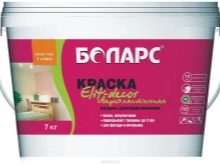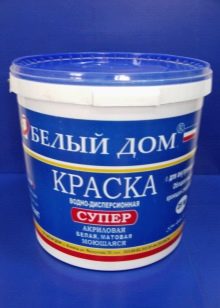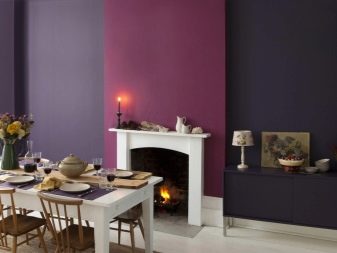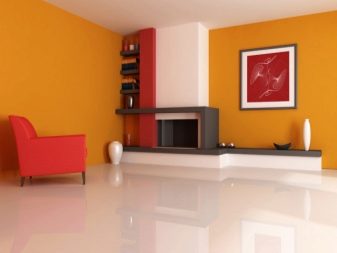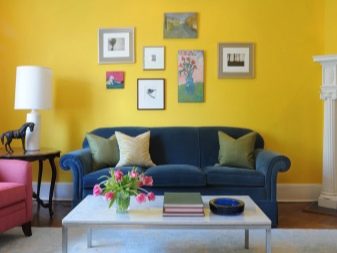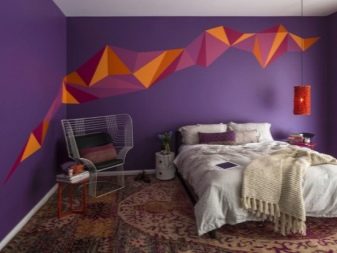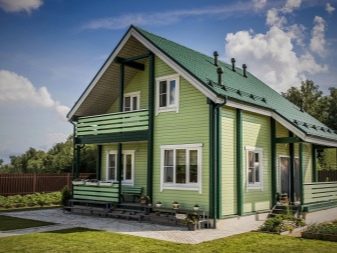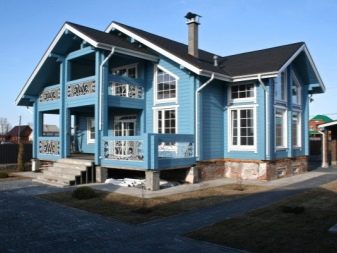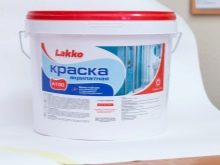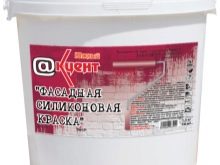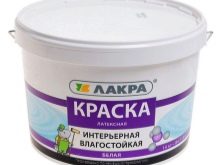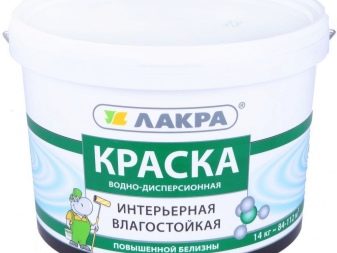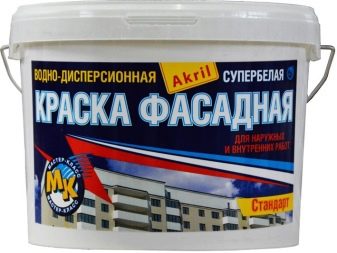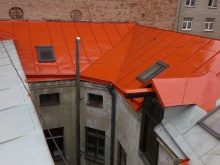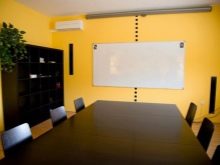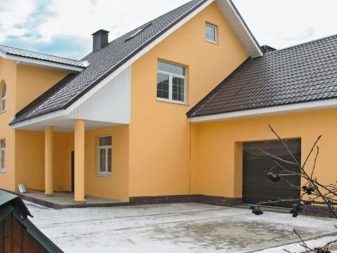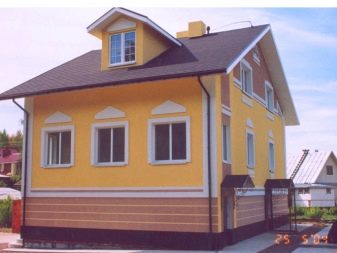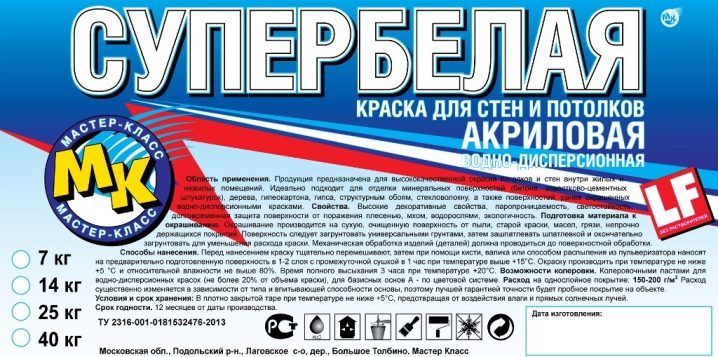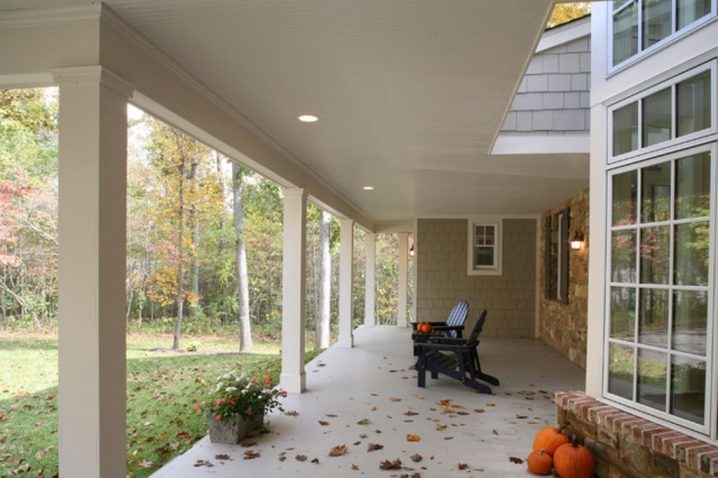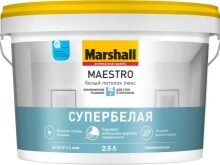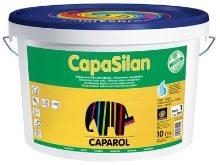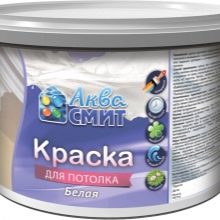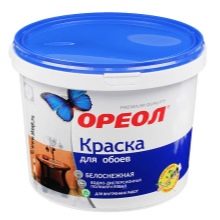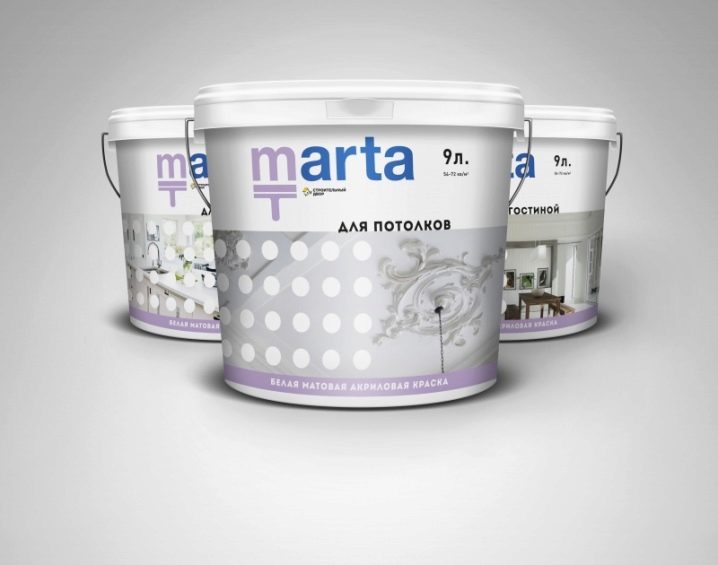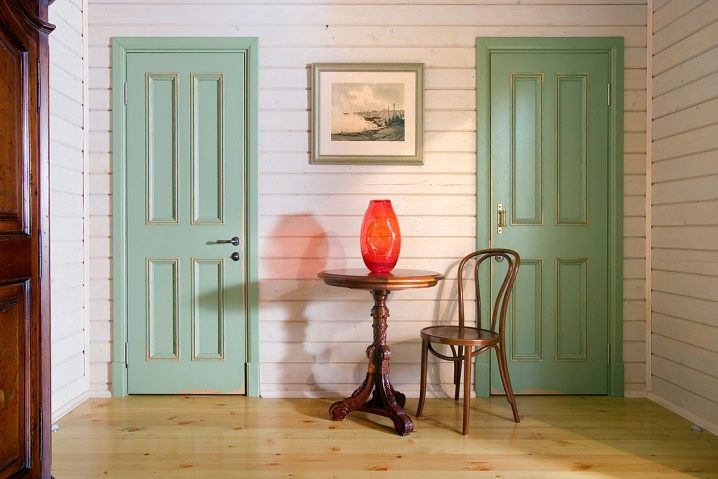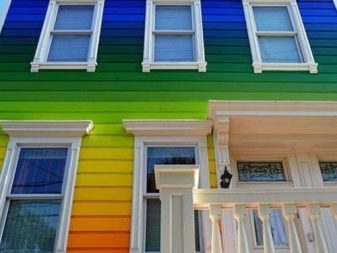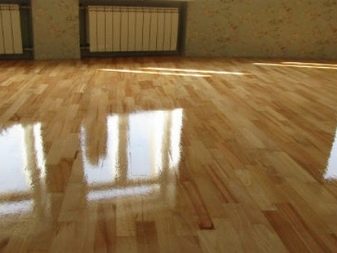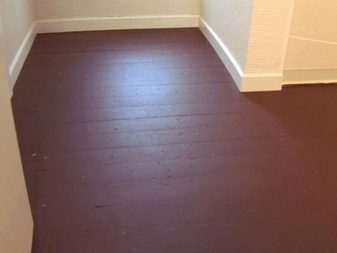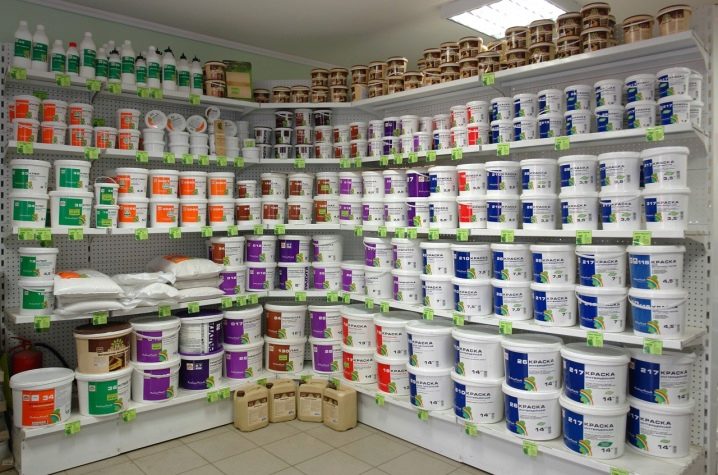Water-dispersion paints for exterior and interior
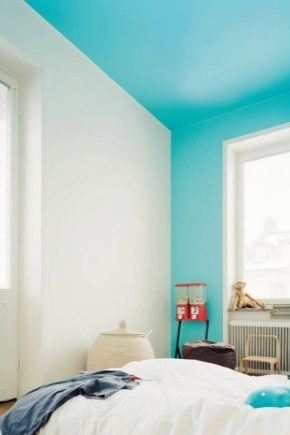
Water dispersion paints for painting various surfaces are becoming increasingly popular. They are used not only indoors, but also for outdoor work. The paint is characterized by an environmentally friendly composition, cost effectiveness and high covering ability, which contributes to the expansion of its field of application.
What it is?
Water dispersion paint is a multicomponent mixture for painting surfaces from different materials. A characteristic feature of such paints is that water serves as a diluent for coloring matter.
The composition of the dispersion paints may include a different number of components, but the basis consists of the following:
- substances that form a polymer film on the surface and bind all the components (polymers: styrene, acrylic, latex);
- pigment substances due to which the desired color is obtained;
- synthetic or natural fillers, giving the basic properties of the coloring composition (minerals: talc, calcite, mica, chalk, marble powder);
- special technological additives to improve the texture and storage of the mixture. The addition of ethylene glycol helps to impart frost resistance. The composition includes preservatives, antiseptics, emulsifiers and thickeners.
Water dispersion paint is sold in the form of a paste of different consistency. To obtain a coloring mixture add clean cold water in an amount necessary for drawing on the painted area with a roller, brush or spray gun. As it dries, the added water evaporates from the surface, resulting in the formation of a stable protective film.
Advantages and disadvantages
To pick up any construction and finishing material, consider the pros and cons of the application and operation.
The advantages of water-dispersion dye mixtures include the following:
- no strong chemical smell;
- eco-friendly composition;
- fire resistant;
- low drying time when applied to the surface;
- just work with paint;
- vapor permeability of painted walls and facades;
- durability and resistance to abrasion;
- the lifetime of the painted coating is from 5 to 15 years;
- high degree of adhesion during dyeing;
- paints are in an affordable price range;
- moisture resistant brands provide high-quality protective coating against water;
- large color range. Color can be added independently with the help of color scheme.
A large number of positive properties of water dispersion surpasses the disadvantages. The downside is the loss of quality characteristics during storage and transportation at very low temperatures. Dispersion paint can not be cooled and frozen. From this it follows that staining is impossible at low temperatures. For painting exterior structures, you need to choose a time when there will be no precipitation, the temperature will become acceptable, and the weather conditions will allow you to start work, allow the paint layer to dry completely. Before painting, the working area is carefully prepared, because water-dispersion formulations cannot hide visible irregularities and surface imperfections.
Types and characteristics
Many types of water-based paints are produced, so the area of their application is very wide. According to the resistance to moisture, water-dispersion solutions are divided into washable, unstable to moisture and moisture resistant.
The dispersed mixture is divided into the main composite polymer component:
- polyvinyl acetate;
- acrylate;
- latex or styrene butadiene;
- silicone;
- dispersion silicate.
A component in the PVA mixtures is polyvinyl acetate, which does not tolerate moisture and is easily washed off. Such cheap mixtures are suitable for painting the ceilings of dry rooms or bedroom walls. Acrylate dispersions contain acrylic, which is characterized by moisture resistance, resistance to mechanical stress, resistance to sunlight without changing color. Unlike PVA, these materials are expensive.
The mixture with acrylic is classified by purpose:
- interior.
- front.
Acrylic formulations are versatile in use. This means that they are used for interior and exterior paint work. Interior type paint walls and ceilings of residential premises, offices.For the external decoration of buildings using facade compounds that have weather-resistant properties.
Acrylic paint can be washable, as well as dry mechanical cleaning. By type of painted surfaces emit compositions for plaster, wood or metal.
Similar in its properties with the acrylic composition is latex paint. The difference lies in the fact that latex turns yellow under the influence of ultraviolet, so it is not used to paint the exterior parts of the structure and rooms, where direct sunlight penetrates. A variety of latex mixtures is a rubber paint with a high content of latex, which has the properties of rubber when applied in 2-3 layers. It creates an elastic durable layer that is not afraid of abrasion, water, high and low temperatures.
It is used as protection against precipitation of roofs made of iron, andulin, slate, concrete. The material perfectly manifested itself as a facade finish concrete buildings, wooden buildings, fences.
Latex mixtures with the addition of vinyl-versatate have recently appeared on the market of paint and varnish products. This substance gives a steady fire quality.On its basis make fire retardant coloring materials. The intermediate link between acrylic and latex compositions is acrylate-latex. Mixing latex and styrene allows you to change the final price of products, and improve quality. The price of such mixtures is lower compared to pure acrylic material.
Silicon resin waterborne silicone paint is able to paint any material., as silicone masks coating defects. There is a possibility of applying to a wet surface: for example, high quality characteristics allow painting rooms with a high level of humidity, making exterior finishing of buildings. A feature of silicone paint is its ability to not absorb dirt and dust, ensuring cleanliness in operation. Silicate formulations are made with the addition of liquid glass, so they acquire particularly strong properties. Ideal for painting facades, creating a protective coating of high density. You can paint only mineral surfaces: concrete, clay, plaster, gypsum.
All production of water-dispersion mixtures is governed by GOST.
When selecting products, the following technical characteristics are evaluated:
- Colour. The color characteristic has an important decorative meaning. Initially, the mixture has a white color due to titanium dioxide pigment. The desired shade is achieved by making the color scheme. The whiter the dispersion is at first, the more saturated the desired color will be.
- Uniformity. In the diluted solution should not be present clots and solid particles. When applied should form a smooth layer.
- Wear resistance. This performance characteristic depends on the strength of the finished layer.
- Material consumption. An important parameter that depends not only on the surface being painted, but also on the quality of the feedstock, on the density of the solution. A good shelter is usually characterized by solutions that, with a volume of one liter, weigh one and a half kilograms. The average consumption of dispersion compositions is 130-180 g / sq. m. Approximate consumption point on the label.
- Moisture resistance. The degree of moisture resistance depends on which formulations can be used under different humidity conditions.
- Resistance to light. From light resistance depends on the appearance of the coating. Resistance to UV is determined by the components of the composition.Acrylic and polyvinyl acetate are well tolerated by light, they will not fade.
- Frost resistance. The parameter of resistance to low temperatures is determined by the number of freezing cycles.
Manufacturers
In the domestic construction market, water dispersion paints are represented by Russian and foreign manufacturers. Among foreign companies engaged in the production of dispersed emulsions, there are German firms Dufa and Caparol, the Turkish company Marshall, the oldest Finnish company Tikkurila, the Slovenian manufacturer Belinka, the Polish company Snezhka, the British concern ICI, which produces the Dulux brand. Also, the Luxens brand, developed by Leroy Merlin, has many positive reviews. They offer high-quality painting materials, as well as a wide range of other products. Paints Dulux, Caparol and Dufa belong to the premium price segment.
The materials of foreign manufacturers are not always better, since often in domestic production they use European raw materials for the manufacture of dispersion emulsions. For example, the German concern Dufa set up the production of paint products in Russia under the brand name Far Far, which reduced the cost without losing German quality.If we talk about rating, then foreign analogues are valued above Russian.
Among the Russian manufacturers are widely represented products of the firms "Tex", "Aqua", "Lakra", Krafor, "Oreol", "Kraskoff". Coloring materials under the brand "Tex" occupy a leading position in the market because they produce products of acceptable quality at an affordable price. Leningrad Paints represent the economy segment of the market. The company Kraskoff Pro produces a wide range of coloring materials for different types of surfaces. Empils manufactures dispersion emulsions Aureol and Newtone based on acrylic, latex and silicone.
The company "Concorde", which produces the trademark "Ecopol", produces professional water-dispersion pastes for construction and decoration. In addition to well-known manufacturers selling paint and varnish products in the Russian market, there are a large number of small producers focused on the regional market. For example, the Sursky Paints group of enterprises produces dispersion emulsions Grafics and Svetlitsa, which are in a low price category.
How to choose?
Which paint to choose for painting depends on the room itself and the operating conditions of the surface.
When choosing water-dispersion formulations pay attention to the following criteria:
- type of the painted surface;
- manufacturer;
- brand popularity;
- operating conditions of the finished coating: exposure to temperature, moisture, light;
- certificate of conformity to quality;
- shelf life;
- compliance with storage and transportation conditions.
Dispersion mixtures are selected based on the type of surface. Sell solutions for processing wood, metal, concrete. Their composition includes additives that improve adhesion to a specific type of material. This information is listed on the packaging. The composition for a tree is suitable for painting wooden doors, windows, clapboard, the facade of the boards, protecting the bark of trees from rodents. Mixtures for concrete are chosen for mineral coatings: plastered walls, concrete panels, bricks. Coloring solutions for metal create a protective layer on metal structures and parts. Aqueous dispersion paints can be applied to acrylic enamel.
Great importance when choosing paintwork materials attached to the manufacturer and the popularity of the brand.The quality of Russian manufacturers is lower than that of foreign ones, because of the quality standards. It is necessary to study consumer reviews, and in the future to give preference to reputable brands.
For internal use all types of water-dispersion formulations. For rooms with windows facing the north, choose latex paint. It is also suitable for painting the walls of corridors and hallways. For bright, frequently visited rooms or kitchen and dining areas, select the coloring composition with acrylic. The ceilings should be painted with an inexpensive polyvinyl acetate mixture.
When painting exterior structures, the choice falls on an acrylic facade paint. It possesses the necessary operational properties, is steady against influence of the negative atmospheric phenomena. The composition is applied in several layers to achieve the necessary protective functions. Rubber paint has a high degree of protection, creating a vapor-permeable elastic cover. Silicone and silicate compounds are expensive, but fully justify their cost, protecting the surface from water and premature destruction.
According to the degree of gloss, gloss or matte paint is selected.The choice is carried out depending on the interior and function of the room. The glossy surface is demanding of a rough finish, since all defects are visible on it, but the gloss gets dirty less and is easier to clean. Glitter gives a special atmosphere to the room. Opaque solutions possess the best shelter, give saturated color.
It is imperative to find information on the production date and shelf life on the can or paint bucket. You can not buy an expired product. It is not suitable for use. Large retail outlets have the ability to store products in appropriate temperature conditions. In smaller construction departments, you should ask about the conditions in the warehouse. If you freeze the composition once, it will be exfoliated. bad paint over the surface.
Sometimes the decisive criterion is the price. In this case, pay attention to low-cost brands of domestic manufacturers. You can pick up a mixture based on styrene with the addition of latex, which will reduce the price not at the expense of wear-resistant and light-resistant characteristics. The choice can be made independently on the basis of the studied information.It is also always possible to get recommendations from a consultant in the building department.
In the next video you can see a review of water-dispersion paints Simphony and tips on choosing them.




